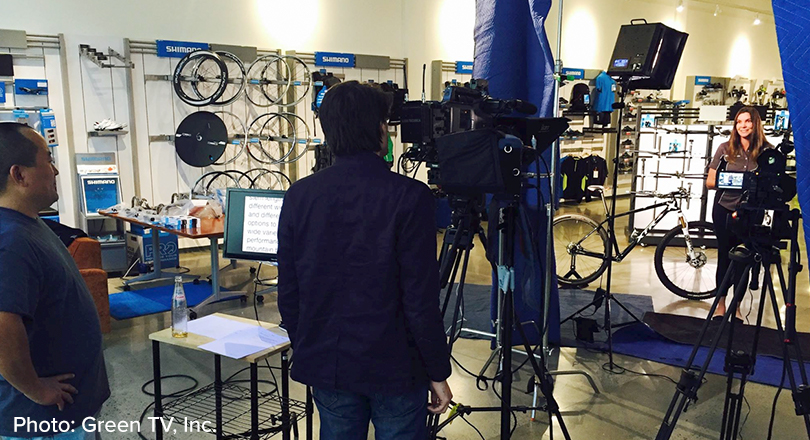Empowering a global sales network
Shimano are big believers in the power of video as the most effective way to communicate information about their products. That’s the focus of their education team, who have built an online learning centre for their thousands of distributors around the world, with over 180 videos, as well as quizzes,, podcasts and a discussion forum. It’s a closed environment for the cycle industry only, with the purpose of educating Shimano’s distributors so they are empowered to pass that knowledge on to consumers. Through the learning centre’s targeted, high-quality content, sales retailers get a deep understanding of Shimano products, how they work, and how to install them.
“We want all our retailers to be Shimano experts” Shimano’s California-based training coordinator Shuji Sakai explains. “Our education team is a marketing role but it’s not really marketing. The marketing team’s job is to make somebody say “hey I really want that” and our job is to empower our sales network to be able to say, “yes, and this is why you really want it.”
While these videos are not consumer facing, they still have their own set of success metrics for Shuji and his team to measure, iterate and optimize. They use Wistia to monitor views, engagement, and drop-off rates, and present a quiz at the end of each video to measure its effectiveness. The team’s podcasts and discussion forum round out the experience of fully engaging and educating their retailers with all the info they need to sell Shimano.
For Shuji and the team there is a big focus on quality and making videos that do their job really well. “We are focusing on producing better quality, shorter form content, making it as good as we can, and at the moment 35–40 videos per year is probably the sweet spot for us.”
Customized video for a global audience
Shuji’s team in California not only make these videos for the North American market, but also for Europe, Asia and the rest of the world. With international video production requirements, video content needs a well thought out and collaborative workflow.
“We all come up with a list and if there are a 100 things on the list and we can only make 40, then we have to decide which 40 we are making. That’s something that we collectively work on amongst our three offices. Europe is a little bit different, for example electric bikes are are huge in Europe, so they would place a much higher priority on those things than we would, but we go back and forth to determine what things were are making in a calendar year.”
What used to be a very separated and siloed process is become increasingly centralized and standardized, but the difference here is embracing a collaborative process where parts of the video can be shot locally and customized for various markets.
“There are camera crews on multiple continents filming and again we are trying to standardize some of the stuff as far as all the headaches that come with mixing footage.”
“It’s becoming a global ‘everybody looks at it’ process. It used to be that Europe made content for Europe, Japan made content for Japan, and we made content for North America, but that’s all consolidating now so that mainly this office, California, is producing the video content for the entire world.”


